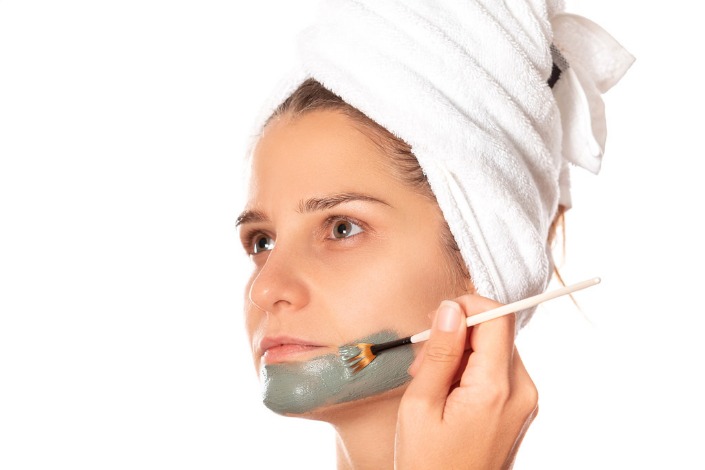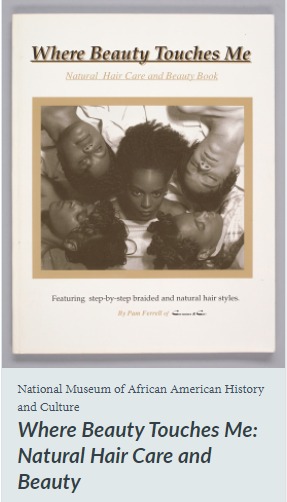Immediate Care After Swimming
Immediate hair care after swimming is essential to maintain the health and appearance of your hair. Exposure to chlorinated or saltwater can cause dryness, damage, and color fading, making prompt attention necessary. Taking quick and proper measures can help prevent long-term harm and keep your hair looking its best after every swim.
Rinsing Hair Thoroughly
Immediately after swimming, it is important to rinse your hair thoroughly with clean, fresh water to remove chlorine, salt, or other chemicals that may have accumulated during your swim. This helps prevent potential damage, dryness, and long-term hair deterioration caused by these substances. Using a gentle shampoo specially formulated for swimmers can further cleanse your scalp and hair, removing residual chemicals more effectively. Additionally, applying a conditioner or a specialized swimmer’s hair treatment can help restore moisture, nourish the hair, and maintain its overall health. Taking these immediate steps after swimming can significantly improve hair condition and prevent issues such as dryness, brittleness, and color fading.
Using Fresh Water to Remove Chlorine and Salt
After swimming, it’s essential to properly care for your hair to prevent damage caused by chlorine and salt. Using fresh water to rinse your hair immediately can help remove these chemicals and restore moisture, keeping your hair healthy and strong.
- Rinse your hair thoroughly with clean, freshwater as soon as you exit the pool or ocean to wash away chlorine or salt residue.
- Gently massage your scalp and hair to ensure all chemicals are rinsed out.
- Consider using a deep conditioner or hair mask to replenish moisture lost during swimming.
- Minimize heat styling and harsh treatments immediately after swimming to avoid further damage.
Gentle Pat Dry with a Soft Towel
After swimming, it’s important to care for your hair to maintain its health and shine. One of the simplest and most effective steps is to gently pat your hair dry with a soft towel, avoiding vigorous rubbing that can cause damage or breakage.
- Use a soft, absorbent towel to gently pat your hair, removing excess water without causing friction.
- Avoid rubbing your hair vigorously, as this can lead to frizz and damage.
- If possible, lightly squeeze or blot your hair to remove as much water as possible.
- Consider using a microfiber towel or a cotton T-shirt for gentler drying.
- Allow your hair to air dry whenever possible to minimize heat and mechanical stress.
- Apply a leave-in conditioner or a specialized swimming hair treatment to protect your hair from chlorine or salt damage.
- Rinse your hair thoroughly with fresh water after swimming to wash out chlorine, salt, or other chemicals.
Deep Cleaning and Clarifying
Deep cleaning and clarifying are essential steps in hair care, especially after swimming. These processes help to remove chlorine, salt, product buildup, and other impurities that can damage hair and diminish its natural shine. Incorporating thorough cleaning and clarifying routines into your hair care regimen ensures healthier, cleaner hair, and helps maintain its softness, strength, and vibrancy after every swim session.
Applying Clarifying Shampoo
Deep cleaning and clarifying are essential steps in hair care after swimming to remove chlorine, salt, and product buildup that can damage hair over time. Clarifying shampoos are specially formulated to thoroughly cleanse the scalp and hair, restoring their natural shine and health. To apply clarifying shampoo effectively, start by wetting your hair thoroughly with warm water, which helps open the hair cuticles and allows the shampoo to penetrate deeply. Take a small amount of clarifying shampoo and massage it gently into your scalp, working through your hair from roots to ends. Focus on areas prone to buildup, such as the scalp and around the hairline. Let the shampoo sit for a minute to break down impurities, then rinse thoroughly with warm water. Follow up with a conditioner to restore moisture and keep your hair soft and manageable. Regular use of clarifying shampoo after swimming can help maintain clean, healthy hair and prevent damage caused by pool chemicals or ocean salt.
Frequency of Clarifying Treatments
Deep cleaning and clarifying treatments are essential steps in hair care after swimming to remove chlorine, salt, and product buildup that can damage hair over time. These treatments help restore hair’s natural shine and softness, making it healthier and more manageable. Clarifying shampoos are specially formulated to deeply cleanse the scalp and hair strands, effectively removing impurities that regular shampoos might leave behind.
The frequency of clarifying treatments depends on how often you swim and your hair type. For occasional swimmers, a clarifying treatment once a month is usually sufficient. Regular swimmers, who expose their hair to chlorine or saltwater multiple times a week, may benefit from a clarifying treatment every one to two weeks. It is important not to overuse these treatments, as they can strip natural oils and cause dryness. Using a nourishing conditioner or deep conditioning mask afterward can help maintain moisture and prevent damage. Tailoring the frequency of clarifying treatments to your specific needs will ensure your hair remains healthy and vibrant after swimming sessions.
Moisturizing and Nourishing
After swimming, giving your hair proper attention through moisturizing and nourishing is essential to maintain its health and shine. Chlorinated or salt water can strip away natural oils, leaving hair dry and fragile. By incorporating effective moisturizing and nourishing techniques, you can restore moisture, strengthen your strands, and keep your hair looking vibrant and well-conditioned even after a dip in the pool or ocean.
Using Hydrating Hair Masks
After swimming, hair can become dry and damaged from exposure to chlorine or salt water. Using a hydrating hair mask is an effective way to restore moisture and nourishment to your hair. These masks penetrate deep into the hair shaft, replenishing lost moisture and strengthening strands to prevent breakage. Regular use of a hydrating mask helps to maintain softness, shine, and overall health of your hair, making it look vibrant and resilient even after aquatic adventures. Incorporating a nourishing hair mask into your post-swimming routine ensures your hair remains healthy, hydrated, and protected from future damage.
Applying Leave-In Conditioners
Proper hair care after swimming is essential to maintain healthy, moisturized, and nourished hair. Applying a leave-in conditioner helps to restore moisture lost during exposure to chlorinated or salt water, preventing dryness and damage. This step also provides a protective barrier that shields hair from further environmental stressors.
When applying a leave-in conditioner, start with damp hair for better absorption. Distribute the product evenly from roots to tips using your fingers or a wide-tooth comb. Focus on the ends of your hair, which are more prone to dryness and split ends. Regular use of leave-in conditioners keeps hair soft, manageable, and resilient against future damage caused by swimming and environmental exposure.
In addition to applying leave-in conditioner, incorporate deep moisturizing treatments and nourishing oils into your routine for enhanced hydration. These practices will ensure your hair remains healthy, shiny, and protected after every swim session.
Incorporating Hair Oils for Extra Moisture
After swimming, your hair can become dry and damaged due to chlorine and salt exposure. Moisturizing and nourishing your hair is essential to restore its natural softness and strength. Incorporating hair oils into your post-swimming hair care routine provides a deep source of hydration and nourishment. Oils such as coconut, argan, or castor oil help to lock in moisture, repair damage, and improve overall hair health. Applying a few drops of hair oil to damp hair can create a protective barrier, prevent dryness, and leave your hair feeling silky and revitalized.
Protective Measures
Protective measures are essential for maintaining healthy hair after swimming, as exposure to chlorinated or saltwater can cause damage and dryness. Implementing proper hair care routines can safeguard your hair’s natural moisture and prevent long-term harm. Understanding the right techniques and products helps in keeping your hair strong, shiny, and well-maintained after every swim.
Using UV Protectant Sprays
Using UV protectant sprays is an essential protective measure for maintaining healthy hair after swimming. These sprays form a barrier against harmful UV rays, preventing damage and color fading caused by sun exposure. Applying a UV protectant spray before and after swimming helps to shield your hair from ultraviolet radiation, which can weaken the hair strands and cause dryness. Regular use of these sprays can keep your hair hydrated, shiny, and less prone to breakage, ensuring it remains strong and beautiful even after a day at the pool or beach.
Wearing Swim Caps for Hair Protection
Wearing swim caps is an effective protective measure for maintaining healthy hair after swimming. They create a barrier that shields hair from chlorinated or saltwater, which can cause dryness and damage. By covering the hair completely, swim caps help reduce exposure to harsh chemicals and prevent hair from becoming tangled or broken. Additionally, they help retain moisture, keeping hair hydrated and less prone to frizz or split ends. Choosing a well-fitted swim cap made from silicone or latex can enhance comfort and effectiveness, ensuring better hair protection during aquatic activities.
Additional Tips for Hair Health
Maintaining healthy hair after swimming is essential to prevent damage caused by chlorine and salt water. Implementing simple yet effective tips can help you keep your hair strong, shiny, and well-nourished. By understanding proper hair care routines and using the right products, you can enjoy your time in the water without compromising the health of your hair.
Avoiding Heat Styling Post-Swim
After swimming, taking proper care of your hair is essential to maintain its health and prevent damage. One effective way to do this is by avoiding heat styling tools, which can weaken the hair strands, especially when they are already exposed to chlorine or saltwater. Implementing simple tips can help keep your hair strong, shiny, and protected.
- Allow your hair to air dry instead of using blow dryers or curling irons.
- Apply a nourishing leave-in conditioner or hair serum to help restore moisture.
- Always rinse your hair thoroughly with fresh water immediately after swimming to remove chlorinated or saltwater residue.
- Use a wide-tooth comb to gently detangle your hair while it’s damp, reducing breakage.
- Incorporate weekly deep conditioning treatments to replenish lost moisture and strengthen hair fibers.
- Wear a swim cap to minimize hair exposure to harsh chemicals and saltwater during swimming sessions.
Maintaining Regular Hair Trims
Maintaining healthy hair after swimming is essential to prevent damage from chlorine and saltwater. Regular trims play a crucial role in keeping your hair in optimal condition and promoting overall hair health.
- Schedule trims every 6-8 weeks to remove split ends and prevent them from traveling up the hair shaft.
- Trim hair regularly to maintain your preferred length and improve the appearance of your hair after exposure to pool chemicals.
- Use nourishing hair masks and deep conditioners after swimming sessions to replenish moisture and strengthen your hair.
- Avoid neglecting trims, as they help prevent further damage caused by frequent swimming and chemical treatments.
- Combine regular trims with protective hairstyles to minimize hair exposure to harsh environmental elements during pool outings.
Healthy Diet for Stronger Hair
Maintaining a healthy diet is essential for promoting stronger and shinier hair, especially after swimming when hair can be exposed to chlorine and saltwater. Incorporate foods rich in vitamins A, C, D, E, and biotin, as well as omega-3 fatty acids, to nourish hair from within. Hydration is equally important; drinking plenty of water helps keep hair moisturized and prevents dryness. Additionally, consuming protein-rich foods such as eggs, nuts, and lean meats provides the keratin your hair needs for strength and growth. Remember to include fruits and vegetables like berries, spinach, and carrots, which supply antioxidants that protect hair follicles from damage. A balanced diet complemented by proper hair care routines can significantly improve hair health following swimming sessions.



